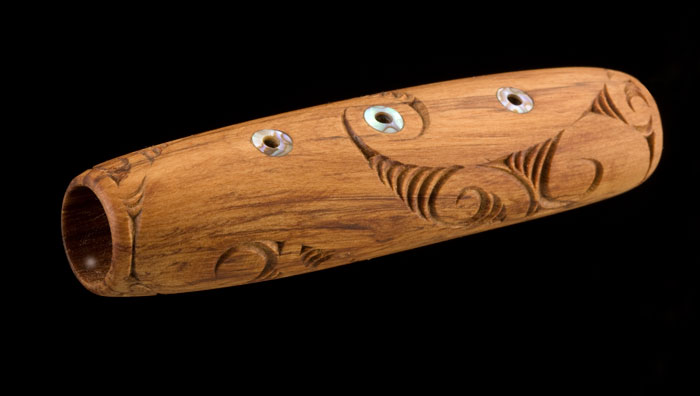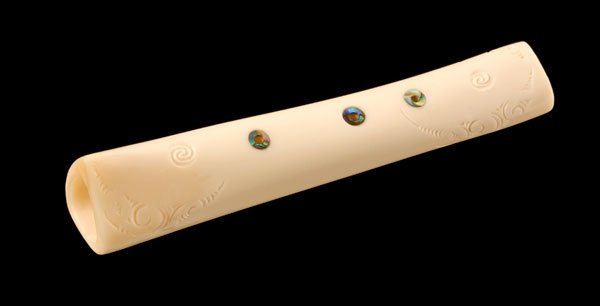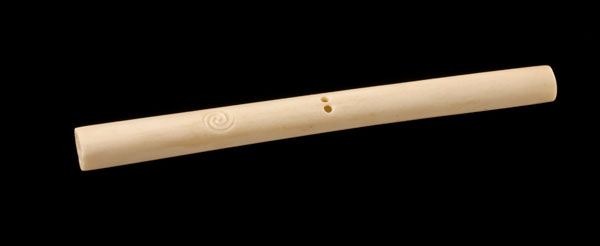Kōauau are the most common of all the traditional flutes. Hine Raukatauri (the case moth) is the atua (goddess) / kaitiaki (gaurdian) of the Kōauau. Kōauau are usually made from wood, bone or stone and vary in length but an average one is about 150mm long.

Kōauau Rākau/Mātai
Kōauau are the most common of all the traditional flutes.
Hine Raukatauri (the case moth) is the atua (goddess) / kaitiaki (gaurdian) of the Kōauau.

Kōauau wheua hipi
Kōauau has many uses.
- They are known to attract native birds who interact and sing along with the beautiful sounds of the Kōauau.
- Kōauau were used to welcome people into life and to help assist the spirit as it leaves life.
- Kōauau were used to help heal broken bones.
- Kōauau were used to help memorise knowledge.
- In the famous Te Arawa love story of Hinemoa and Tutanekai, it is said that Tutanekai played a Kōauau, whose song enchanted Hinemoa and led her to him.
Kōauau are made from a variety of materials:- albatross wing bone, moa bone, human bone, Daisy the cow, mutton bone as well as a variety of woods and stone.
Most Kōauau have three finger holes (wenewene).

Ororuarangi Toroa
According to some of the legends, the Patupaiarehe (fairies) were the experts at playing Kōauau.
Nga Wenewene
Mauimua Mauiroto Mauitaha
Te mea whakangawari Te mea whakakaha Te mea whakatika
Putanga Mangai
The kōauau - and the longest Maori placename:
Tetaumatawhakatangihangakoauauotamateapokaiwhenuakitanatahu
It is the name given by the local Maori people, Ngati Kere to a prominent hill to celebrate the achievements of Maori ancestor, Tamatea Pōkai Whenua. Tamatea was a famous chief and warrior of his time. His son Kahungunu was the founder of the Ngāti Kahungunu tribe, which extends from Gisborne to Cape Palliser.
Tamatea was so grieved over the loss of his brother in the Matanui battle, he would sit on the hill and play his lament on what is called the kōauau or Māori flute.
The name means 'The hilltop where Tamatea, with big knees, conqueror of mountains, eater of land, traveller over land and sea, played his Koauau (flute) to his beloved'.

Koauau toroa / Albatross